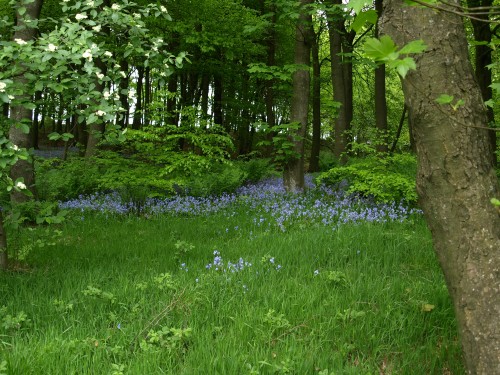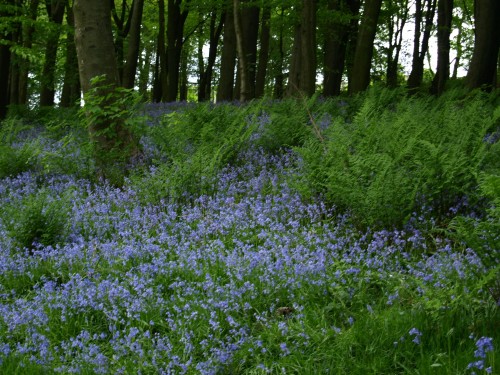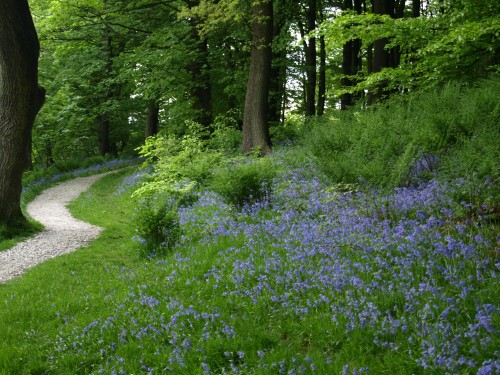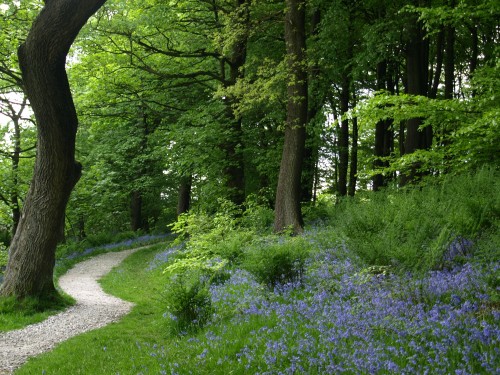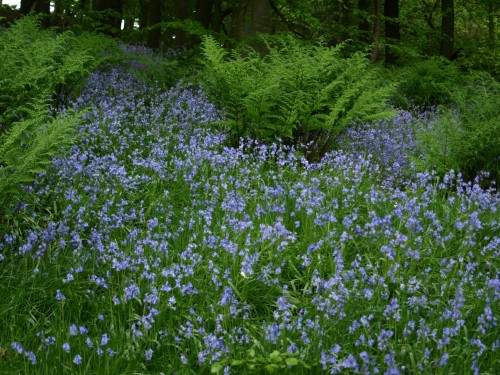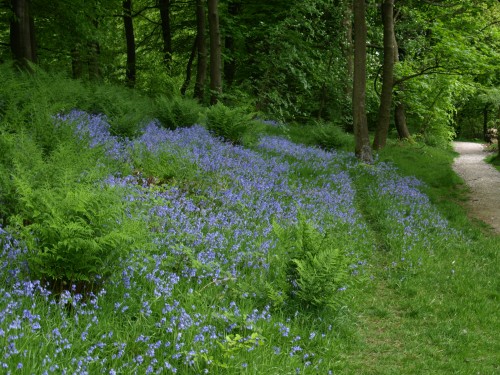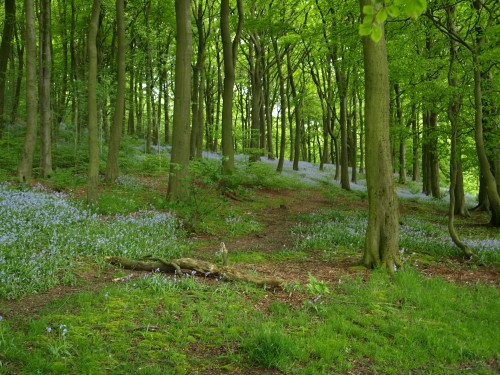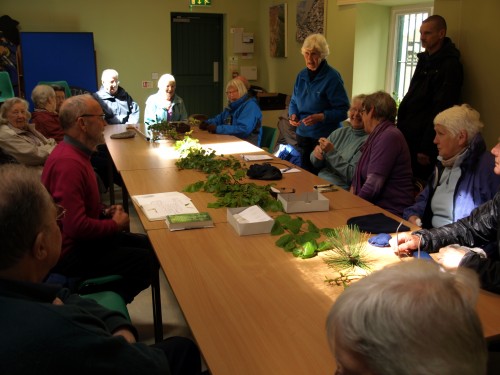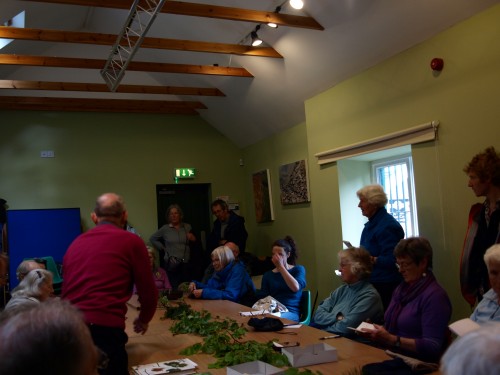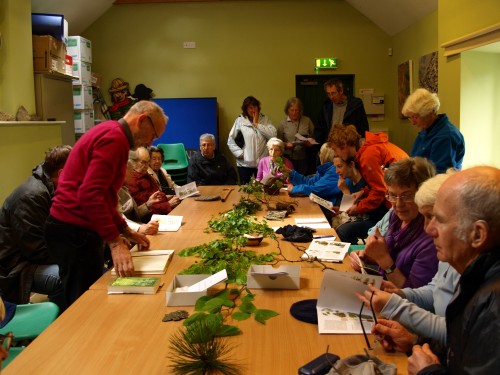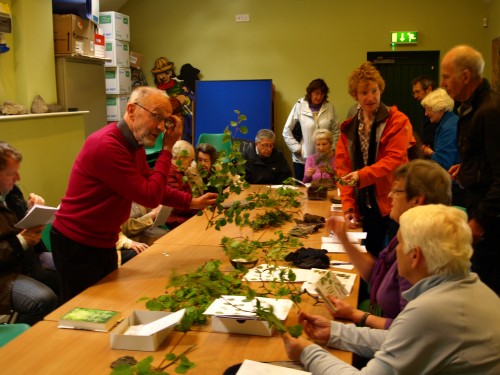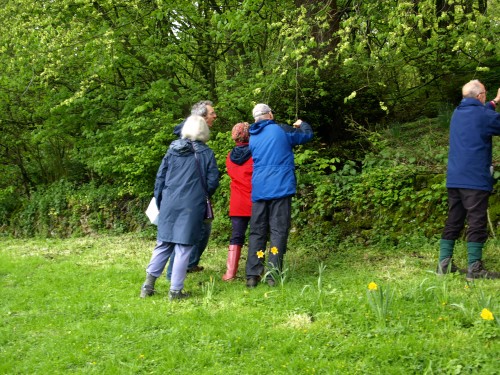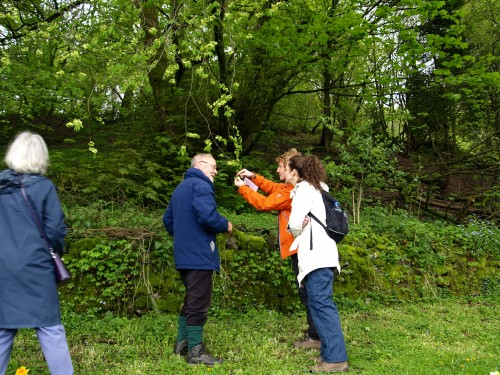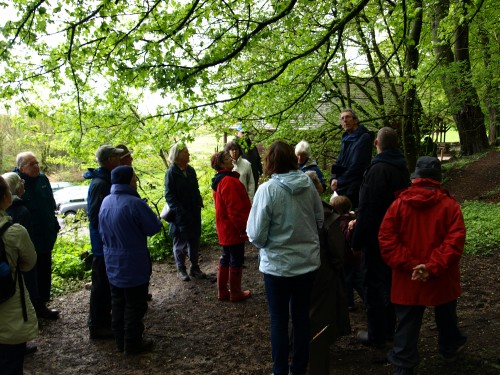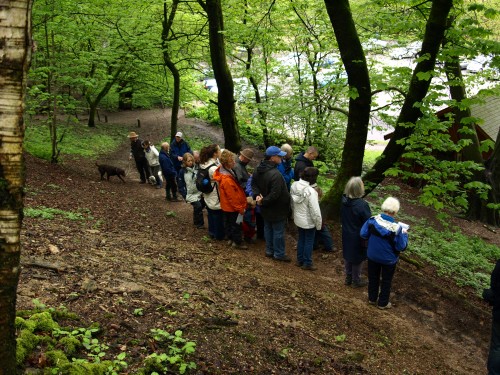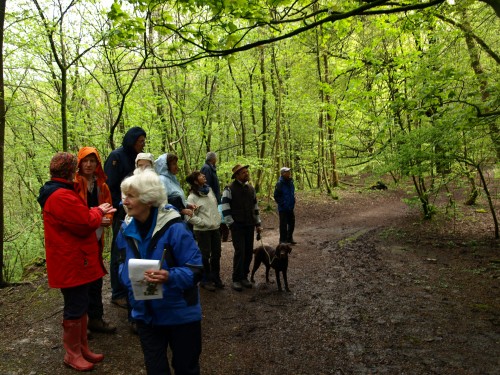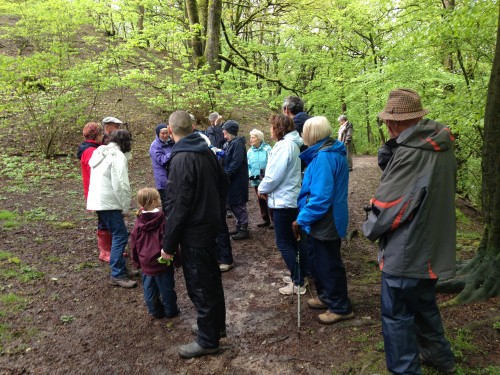Some quick thinking by a party of visitors out walking near the edge of the woods saw them intervene and stop Vernie the Rottweiler from chasing sheep. They managed to catch Vernie, and attach some string to her collar before bringing her down to the visitors centre at Poole's Cavern. Thirsty after all her running around she proceeded to drink vast quantities of water, and eat handfuls of treats. In the meantime Paula Pickering, who manages the Cafe at the Cavern, thought that she recognised Vernie, so she was taken to Overdale vets where a quick scan revealed that she was chipped. In the meantime Vernie's owners dropped in to the visitor centre looking for her. So they were able to rush down to Overdale vets to be reunited. A happy ending for all concerned.
News and Events
We love to hear about your experience and see your photographs through the seasons. Don't forget to follow us on Facebook and share our pages. We know we've done a great job when you've had a fantastic day out!
BCA Members enjoy a guided walk through through the Wild flower glades of Grin Low
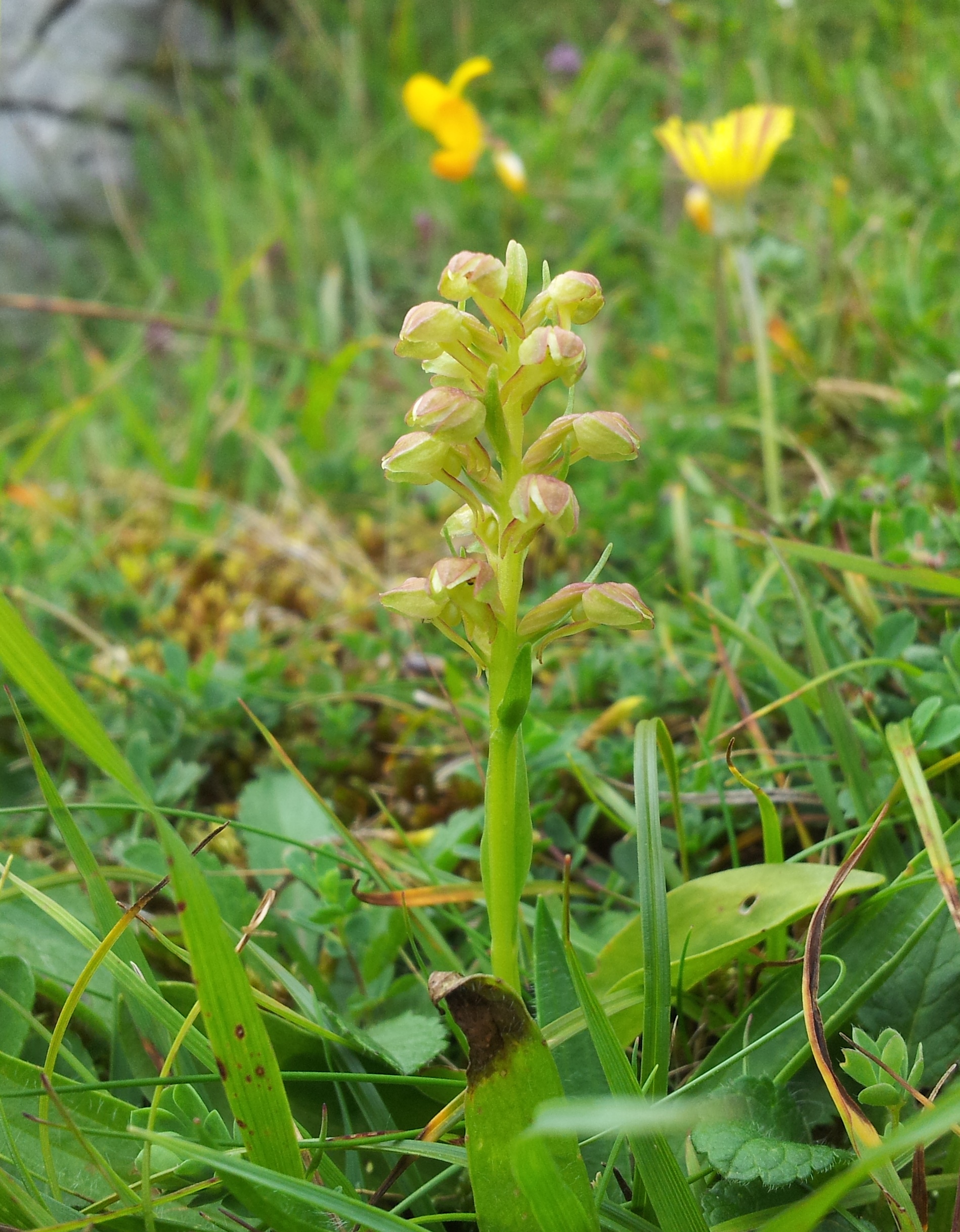
A Frog Orchid, one of the many wild flowers that thrive on the lime rich soil in the glades in Grin Low
It was a perfect sunny summers Sunday afternoon, ideal for the guided walk through the wild flower glades of Grin Low, led by June Noble and ably supported by husband Lyn for members of the Buxton Civic Association.
The woodland glade areas in Grin Low, are associated with the 17th & 18th century lime burning industry that used to dominate the hillside. Below each kiln is a wide area where waste limestone ash was tipped. Slowly the lime tips were colonised by Lime loving species of herbaceous plants and grasses such as Northern Marsh Orchid, Burnet Saxifrage, Globe flower, Mountain Everlasting, Creeping willow and Juniper creating a unique habitat which unlike the neighbouring farm land is not grazed or fertilized by animal livestock.
As well as being able to see a wide range of species, June gave members tips on wild flower identification and spoke about the importance of the glades, explaining how the management of the glades by giving them an annual cut using power brush cutters and the cuttings raked and removed from the glade, is vital in preventing the thin soil layer from becoming too enriched and therefore able to support invasive species.
Lyn and June have produced an excellent introductory guide to "The Wild Flowers of Grin Low Country Park" which is available from Poole's Cavern Visitor Centre.
BCA Members Questionnaire Summer 2014
We have developed a simple members questionnaire to help us understand what you think about the Buxton Civic Association, and to give you a chance to tell us how you would like to be more involved with what we do. Completing the Questionnaire will really help us understand what you want from your membership. It will only take five minutes.
POEM – Jack in the Green by Peter Allsop

"I knew he watched from among the foliage"
In younger days I walked the woods,
That spoke the language of birds and earth
And searched for him whose name I did not know.
Yet even then, in childhood games
I knew he watched from among the foliage,
His leaf mask smiling through
The scented blossom
Of those joyous infant years.
In the brook I paddled
Near my grandma’s cottage,
Forging up-stream in search of its source.
A waterfall I found
That tumbled into a pool,
Where trout flashed
Like silver stars
In the depths of its dark mystery.
This he showed me,
Him whose name I did not know.
This fountain of knowledge;
This secret fount of childhood dream
That seems strangely blurred now,
With the passage of two score years.
Yet still I glimpse him
In woodland glades
Or in lonely copses
That crown our hollow hills.
Now we smile in recognition:
Yet through the ferny gloom
I witness in his wise eyes
A sense of loss,
Deeper than
The void of space
And the passage of dying stars.
REPORT ON BUXTON CIVIC ASSOCIATION 45th AGM
YOUNGER GENERATION STEPS IN
A packed AGM at Buxton Civic Association’s Visitor Centre paid tribute to retiring Board members and welcomed younger ones to take on new roles and responsibilities.
Chairman Paul Dinsdale covered a wide range of topics reflecting the great number of responsibilities currently undertaken by the Association’s special interest groups. These include the Woodlands Group, chaired by Peter Phillipson, who gave an illustrated talk on the work done on paths, stiles, walling and steps in Grin Low and Corbar as well as reporting on storm damage which cost several thousand pounds last year alone. He emphasized that trees fallen or felled from necessity, left space in the canopy allowing young saplings to regenerate, while fallen timber provides an invaluable natural habitat for insects and small animals.
Vice-Chairman Mike Monaghan spoke of the progress being maintained in sourcing good quality Fair Trade and local produce for the popular Café at the Cavern and of our aim to recycle water where appropriate. He also applauded our achievement in gaining the County Council’s coveted Environmental Quality Mark, testifying to the Association’s overall environmental awareness and initiatives. He also complimented Paula Pickering, manager of the highly successful Café at the Cavern, which has recently again been awarded the highest five star rating by Council Environmental Health officers.
The Community and Membership Group is now lead by Mike Wilde, and is becoming involved in a wide range of community initiatives and projects, as well as organizing events for members and the public, and raising awareness of the Association and its work. In this, he is ably assisted by directors Alyson Phillips, who is also responsible for the production of the Association’s excellent Newsletter, and Tim Middleton.
Both Planning and Corporate Affairs Groups were mentioned by the Chairman who detailed recent changes. Hilary Lawrence, formerly Vice-Chairman and Chair of Planning, has stepped down from those roles, and the Chairman paid tribute to her support, and her long, dedicated and enthusiastic service. Stephen Robinson, also a member of the Association’s Planning Group, has decided not to stand for re- election after many years as a director.
The meeting elected three new directors, Jonathan Davey, Owen Longden, and Brian Lawrence.
The Chairman thanked the Association’s staff, volunteer directors and committee members, and all those involved in supporting and running the Association, which was in a healthy financial position, its turnover approaching half a million, and currently employing around thirty staff.
Following the formal business of the AGM, members enjoyed refreshments, followed by an excellent and stimulating presentation by Dai Larner, Executive Director of High Peak and Staffs Moorlands Councils, on the processes involved and problems faced in the preparation of a new Local Plan.
For more information on the work of Buxton Civic Association, and how to join, please contact us on 01298 26978, or at communications@buxtoncivicassociation.org.uk
Macclesfield Civic Society visit to Buxton
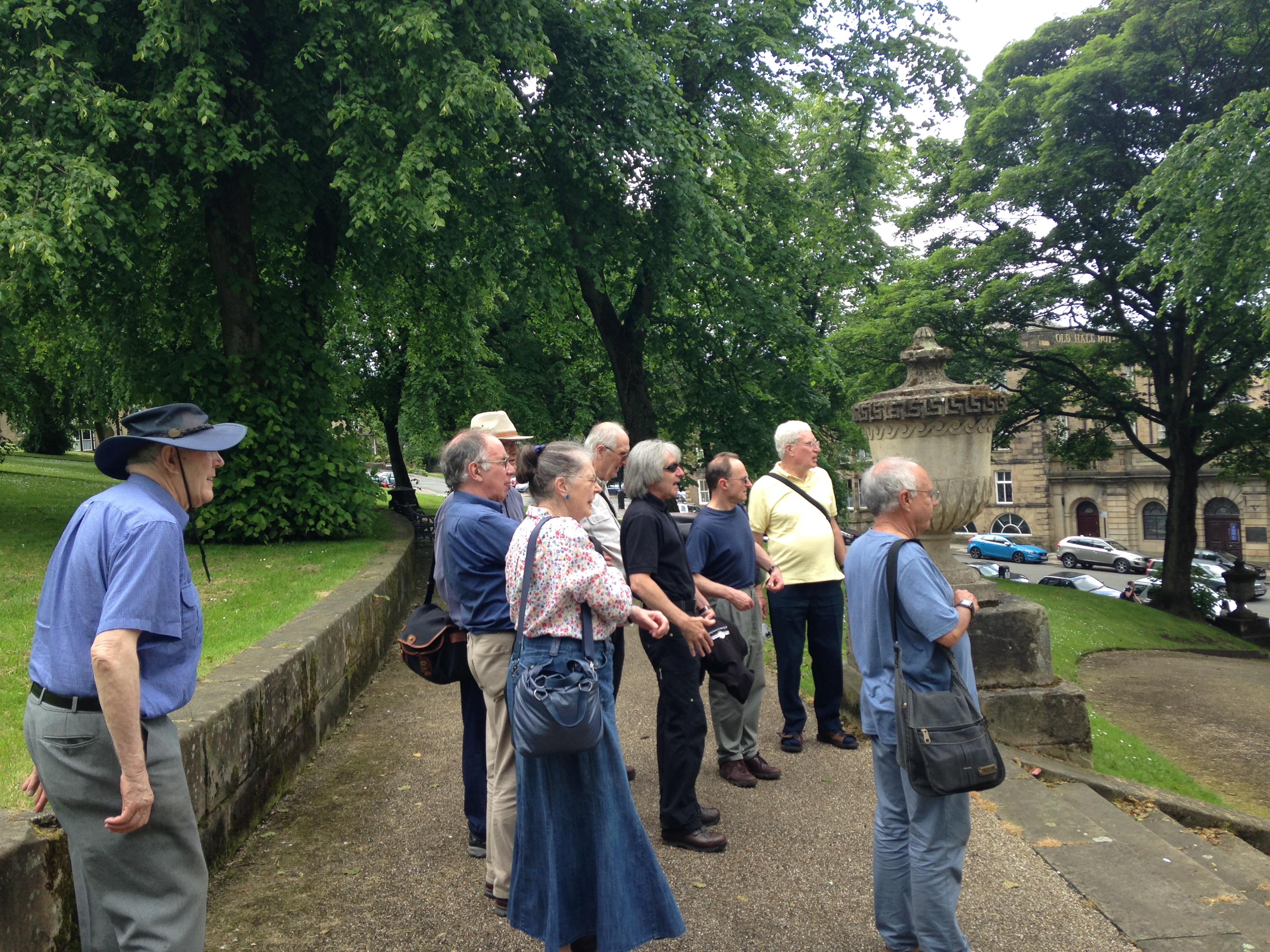
Macclesfield Civic Society members on the Slopes.
Macclesfield Civic Society were given a warm welcome to Buxton on Saturday as guests of Buxton Civic Association. As well as a trip down Poole's Cavern a guided tour of the town was arranged to take in some of the historical buildings in Buxton.
Macclesfield Civic Society have a regular programme of walks and this was the first visit to Buxton for a number of years. Poole’s Cavern cave guide Ashley Cooper provided a fascinating and interesting account of the town’s well know, and some of the less well known buildings and their history. Taking in the Opera House and the Dome, who kindly allowed them to look inside, the group then went to see the Crescent and hear about the plans to restore it as a 5 star hotel. Ashley explained about the original function of the Slopes as part of " the taking the waters cure". A trip back through the Pavilion Gardens was followed by a brisk walk up to the Poole’s Cavern visitor centre, where they had tea.
The visit was rounded off by a trip down Poole’s Cavern where they appreciated the length of time that man has lived in and around Buxton and were entertained by stories of the outlaw Poole and the intrepid Victorians who opened the cave up as a show cave. Keith Smith Chair of Macclesfield Civic Society thanked Buxton Civic Association for their hospitality and for a fascinating and interesting afternoon.
Corbar Woods Bluebells
Trees in Grin Wood
Below is the list of 21 different species of tree that you can see in Grin Wood.

How many of these have you seen in Grin Wood?
Advanced Notice of the AGM 23rd June 2014
The Buxton Civic Association will hold its AGM on 23rd June at 7.30 pm at the Poole’s Cavern Visitor Centre.
In addition to the formal business, Dai Larner, Executive Director of High Peak Borough Council and Staffordshire Moorlands District Council will speak to members of the Civic Association on "The process of producing the local plan."
Full details of the AGM will be sent to members in due course.
Guided Walk in the Woods
Some photographs from the afternoon.
The rain held off just long enough to enable thirty members Buxton Civic Association to undertake a guided talk and walk in Grin woods to learn how to recognise the different trees that grow there.
Under the very able guidance of Angela Wills and Mike Monaghan, the afternoon started off with a talk about the history of the woods explaining that they were planted in the late eighteenth century to hide the scars from the limestone extraction and lime burning that had gone on on Grinlow for many years.
Initially planted with Beech, there were now some 21 species of trees that could be found in the woods, and Mike and Angela provided examples of the leaves, bark and fruit of many of them to help with their identification.
During a break in the weather Angela and Mike then led a guided walk through the woods and members were able to see how many of the trees they could identify.
It was a thoroughly enjoyable and informative afternoon and everyone is looking forward to the next guided walk on 20th July which will be about the wild flowers of the glades in Grin woods.
